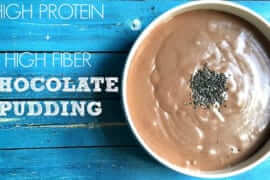I think a lot of people assume that as a health coach, my eating habits are perfect and always have been. The truth is, there is no such thing as perfection when it comes to eating. My journey to healthy eating is a long, sordid affair of trial and error. A lot of trial and error.
Growing up, we didn’t have a lot of money.
I was raised mostly by my grandmother, who had to buy groceries (and just about everything else) for three kids on a very small amount of money each month. She did the best she could and I’m forever grateful. School lunches consisted of white bread with mayonnaise and cheap ham with hard, gelatinous chunks and a back of chips. It was such a treat to have bacon and eggs for breakfast, but more often than not it was cereal or cinnamon rolls from a can.
My best friend would come over and for a snack, we would eat white bread with margarine or white bread with white sugar. There was rarely much edible food in our fridge, so we ate what we could scrounge up.
It’s important to realize that at this time, I had several health issues. I had severe anxiety, severe acne, zero attention span, mood swings (which in truth could be in part to a very unhappy and unstable home life) and I could never sleep at night, but was exhausted every morning. I had no immune system and was sick constantly.
When I was sixteen, I dated a guy who was vegan, which opened me up to the world of animal rights.
I was hooked. I didn’t want to support or take part in the torture of innocent animals, so I gave up meat immediately. By this point, I worked on and off and could afford some of my own groceries. I ended up eating a whole lot of pasta and mock meat.
Over the next three to four years, I remained a vegetarian, often becoming vegan on and off. I desperately wanted to feel better, to be healthier, to have clear skin. I thought eschewing meat was the answer to my health problems. In addition to the pasta and fake meat I was eating regularly, I incorporated other veggies, whole grains, and legumes. I focused on eating “healthy” vegetarian staples – whole wheat, beans, veggies. I also ate seafood on and off during this time.
Looking back, it comes as no surprise that I didn’t see an improvement in my health. I was so single-minded, hard headed and ignorant back then. I was sure that giving up animal products would improve my health, but in reality, it continued to deteriorate.
My skin had not improved, my immune system was still weak, sleep was still a constant battle and I felt like crap all the time. Constipation was so severe, I went to the bathroom maybe two or three times a week. My periods were incredibly irregular and when I got them, I bled heavily. I couldn’t walk. I often missed school. Not to mention that I was constantly hungry. Like, starving. I felt hunger pangs all the time.
As a twenty-one-year-old…
Around twenty-one, I started incorporating meat into my diet. I had joined a gym and realized that I was so weak, so tired, so unhealthy – that maybe living a vegetarian lifestyle wasn’t for me. So I started eating chicken and turkey.
By all means, I was eating a conventionally healthy diet. Low-fat, whole grains and a ton of fruits and veggies. I remember eating a lot of egg whites with asparagus for breakfast, a turkey sandwich on whole wheat for lunch and chicken or shrimp with rice and veggies for dinner.
Healthy, right? Not so much.
I was reaching the end of my rope. I still felt like sh*t all the time. My skin was no better and my anxiety had worsened. I wondered if reintroducing meat was the wrong thing to do. I wondered what the right thing to do was because I could not figure it out. With my anxiety at an all-time high, I felt like I was losing my mind.
As an adult with all the answers! Well, not really…
And then…something changed. While surfing the internet and desperately trying to find any information on a healthy diet, I found the Weston A. Price foundation. The more I read, the more everything made sense. The more the pieces fell into place.
I needed fermented food for the good bacteria in my gut. I needed soaked and sprouted grains to help me digest them. I needed healthy forms of protein. I needed fat to support my body and brain. I needed fat to stabilize my mood and my periods. I needed fat to absorb the vitamins in the food I was eating. It all made sense.
I replaced my soy and almond milk with raw, grass-fed milk from a local farmer. I replaced soy and fake meat with whole eggs, red meat, seafood, chicken – a variety of proteins. I replaced my “heart healthy” Earth Balance with real butter, olive oil, and coconut oil. I replaced the grains I was eating with soaked and sprouted options.
And something happened. I started to feel better.
I started to see the light at the end of the tunnel. Very slowly, my health improved. I had more energy. My skin started to clear a bit. My periods started to normalize.
It was around this time that I decided to get my certification in holistic nutrition.
And while I felt better, I knew something still wasn’t quite right. I was starting to feel better, but very slowly. I knew I needed to heal from years of damage to my body. I just wasn’t entirely sure how to do it, and back then, there wasn’t a ton of information on healing diets like there is now.
After doing more research, I decided to eliminate grains. Even soaked or sprouted, they were difficult for me to digest. The same with legumes; I gave them up. Eating them was a missed opportunity to eat veggies, which I knew were more nutrient dense and easily digestible. So I was basically eating a paleo diet before paleo was a huge movement – which I’m happy to say it is now.
Over the years, I’ve fine-tuned my diet even further.
I incorporate healing foods, like bone broth and cod liver oil. I eat fermented foods every day. I still focus on high-quality fats and proteins, along with healthy carbohydrates that work for me. I occasionally eat grains and legumes these days, but they are no longer a staple in my diet.
The truth is, I don’t love to label how I eat. I don’t love labels in general. But the reality is that my diet most closely resembles a paleo diet. And the beautiful thing about that is that I don’t consider paleo to be a one size fits all, rigid approach to health with a strict set of rules.
I believe in making paleo work for you.
If that means eating white rice like I do, then that’s great. I also eat raw dairy; not a ton, but it is something you will find in my fridge. I drink kefir daily. And if I want bread or pasta, there are so many great gluten-free options these days that it doesn’t throw me off when I eat it. Hell, I even eat sprouted or soaked real bread or pasta from time to time.
I now just focus on eating a whole, unprocessed, organic diet. I don’t count calories, fat or carbs. I count nutrients. I eat food to enjoy it, to sustain and nourish my body. These two things are not mutually exclusive.
These days, my skin is clear. My anxiety is all but a memory. My periods are like clockwork. My mood swings are nonexistent. I haven’t gotten sick in two years and even then, it was a minor cold.
It took me several years to figure out what worked for my body. Everyone is different and there’s often some level of experimentation when determining what works for you. But let me tell you what doesn’t work for anybody: refined, low-fat, processed food.
If you want to improve your diet, your health, your life – start with real, unprocessed foods that humans have been eating for thousands upon thousands of years. It may take some time to fine-tune exactly what works for you, but I promise it’s worth it.




